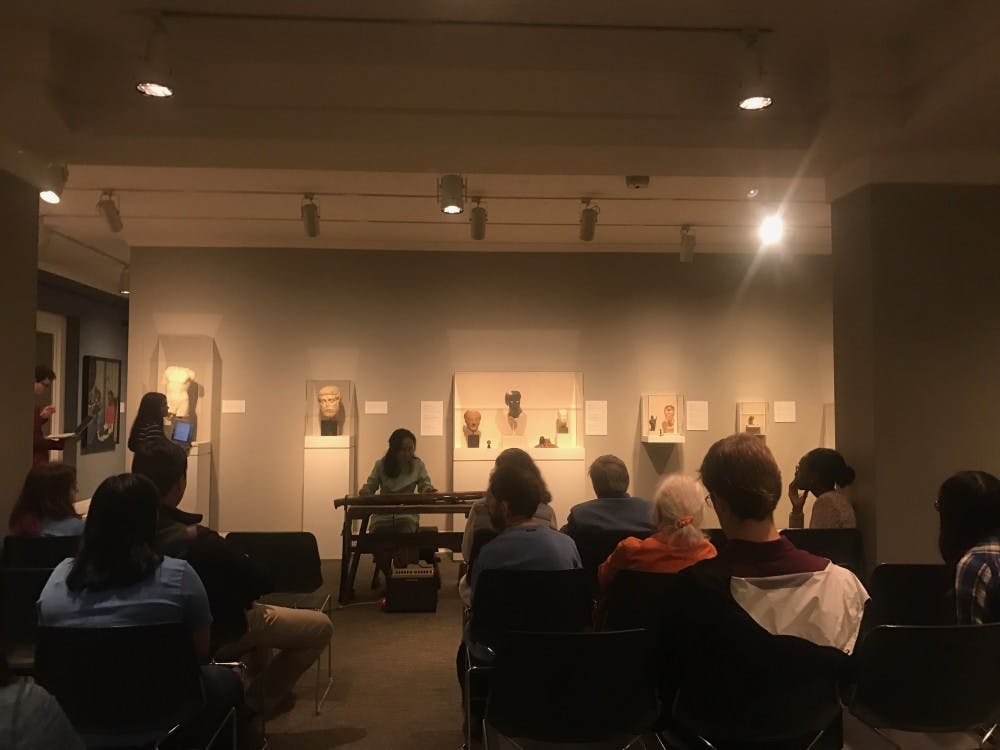Dr. Li-ling Hsiao, an associate professor of Chinese language and literature at UNC, was happy to showcase the guqin to a crowd gathered in Ackland Art Museum on Sunday.
The guqin is a seven-string, widely-respected traditional instrument. It carries a peaceful, spiritual sound. Hsiao describes it as “the most important in defining the culture of Chinese scholars.”
Hsiao is one of three performers in conjunction with the Ackland Art Museum’s exhibition "Court and Capital: Art from Asia’s Greatest Cities." The exhibit, on display until Dec. 10, explores the customs and fashions of major cities and cultural centers of Asian countries, from ancient times to the present. The performances are meant to bring attention and perspective to the exhibit.
“You can come back to the art and see it in a new light,” said Allison Portnow Lathrop, the Ackland’s public programs manager.
Hsiao sees the performance series and the exhibit as an opportunity for people to connect with their own culture, or to be exposed to art they are completely unfamiliar with. For sophomore Emma Li Tsai, who attended the performance for her Chinese culture class, this was the case.
“I’ve never heard of the guqin before, so I’m looking forward to hearing what it sounds like,” Tsai said before the performance began.
Although Hsiao isn’t a professional musician, she learned to play the guzheng when she was a child living in Taiwan. She decided to abandon the instrument when the sound started to become modernized. For the past eight years, she has played the guqin.
“The more techniques that develop, the less I like it. So I went back to the essence,” Hsiao said.
Over the course of an hour, Hsiao performed several songs and shared the history that is associated with the instrument — ranging from Confucius to Emperor Yao to Daoism. Hsiao also shared the symbolism associated with the design of guqin itself. In Chinese culture, its flat bottom represents how the Earth is viewed as flat, while its round shape represents how heaven is viewed as round.



